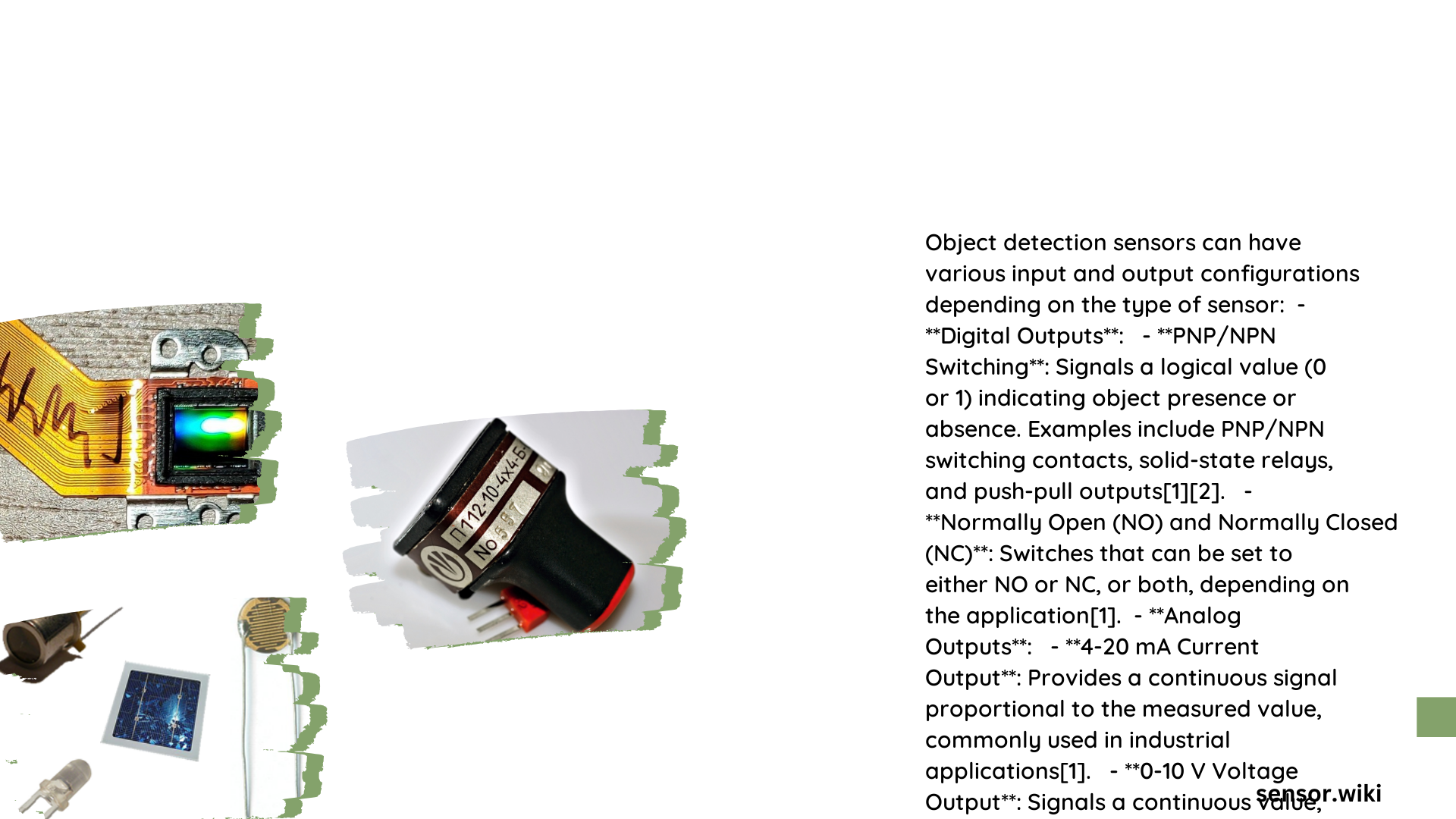Object detection sensor technologies represent a critical intersection of advanced imaging, machine learning, and computational intelligence. These sophisticated systems leverage multiple input sources like RGB cameras, depth sensors, and LiDAR to capture comprehensive environmental data, processing complex visual information through neural networks to identify, classify, and track objects with remarkable precision and speed across diverse applications ranging from autonomous vehicles to industrial robotics and surveillance systems.
What Are Object Detection Sensor Input Sources?
RGB Camera Inputs
RGB cameras serve as the primary input source for most object detection systems. These sensors capture color images with varying resolutions and frame rates, providing rich visual information for algorithmic processing.
Key RGB Camera Characteristics
- Resolution Range: 720p to 4K
- Frame Rates: 30-120 FPS
- Color Depth: 8-bit to 24-bit color channels
Depth Sensor Inputs
Depth cameras enhance object detection by providing three-dimensional spatial information, crucial for understanding object positioning and environment topology.
| Sensor Type | Depth Range | Accuracy | Typical Use Case |
|---|---|---|---|
| Stereo Camera | 0.5-10m | ±2-5cm | Robotics |
| Structured Light | 0.2-5m | ±1-3mm | Gesture Recognition |
| Time-of-Flight | 0.5-20m | ±1cm | Autonomous Vehicles |
LiDAR Sensor Inputs
LiDAR sensors generate high-resolution 3D point clouds, offering unprecedented environmental mapping capabilities.
LiDAR Performance Metrics
- Point Cloud Density: 100,000-1,000,000 points/second
- Scanning Range: 100-300m
- Angular Resolution: 0.1-0.4 degrees
How Do Object Detection Algorithms Process Sensor Inputs?

Neural Network Processing
Object detection algorithms like YOLO (You Only Look Once), SSD (Single Shot Detector), and Faster R-CNN transform raw sensor data into actionable insights through complex neural network architectures.
Processing Steps
- Image preprocessing
- Feature extraction
- Region proposal generation
- Classification
- Bounding box refinement
What Are Typical Object Detection Outputs?
Bounding Box Representation
Detected objects are typically represented through rectangular bounding boxes with specific attributes:
– Coordinates: (x, y, width, height)
– Confidence Score: Probability of correct detection
– Class Label: Identified object type
Visualization Techniques
- Color-coded bounding boxes
- Confidence score overlays
- Class label annotations
What Performance Metrics Define Object Detection Systems?
Accuracy Evaluation
- Mean Average Precision (mAP): Primary accuracy metric
- Frames Per Second (FPS): Real-time processing capability
- Computational Efficiency: GPU/CPU resource utilization
Algorithm Performance Comparison
| Algorithm | mAP | FPS | GPU Memory |
|---|---|---|---|
| YOLOv7 | 56.8% | 160 | Low-Medium |
| Faster R-CNN | 50-60% | 30 | High |
| SSD | 75-97% | 50-100 | Low |
What Challenges Exist in Object Detection?
Technical Limitations
- Environmental variability
- Computational complexity
- Sensor fusion integration
- Real-time processing constraints
Emerging Trends in Object Detection
Advanced Techniques
- Edge AI optimization
- Multi-sensor fusion
- Lightweight neural architectures
- Improved occlusion handling
Conclusion
Object detection sensor input-output technologies continue evolving, promising more sophisticated, efficient, and accurate environmental perception systems across multiple domains.
